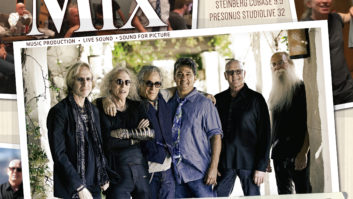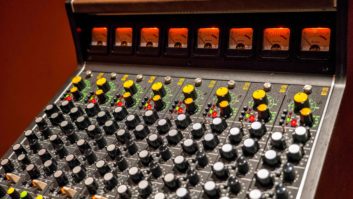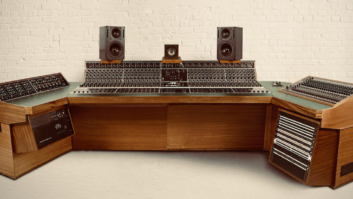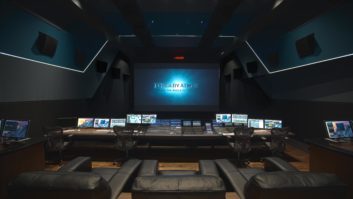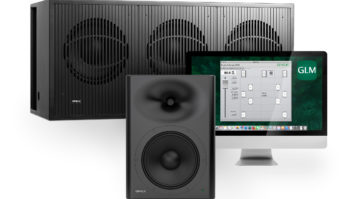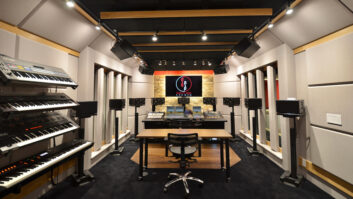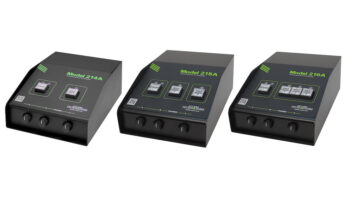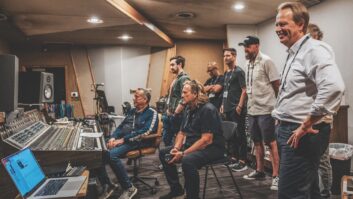Console or controller? It’s a silly argument. You want to record clean tracks and you want to mix quality recordings. Some prefer faders, some prefer all in-the-box. It doesn’t matter how it’s done. We live in a hybrid world.
That said, here we list the most recent introductions from some of the key players in recording and mixing consoles. Consoles with a capital C. There might be fewer of them these days, but they are only getting better in terms of quality, workflow and control.
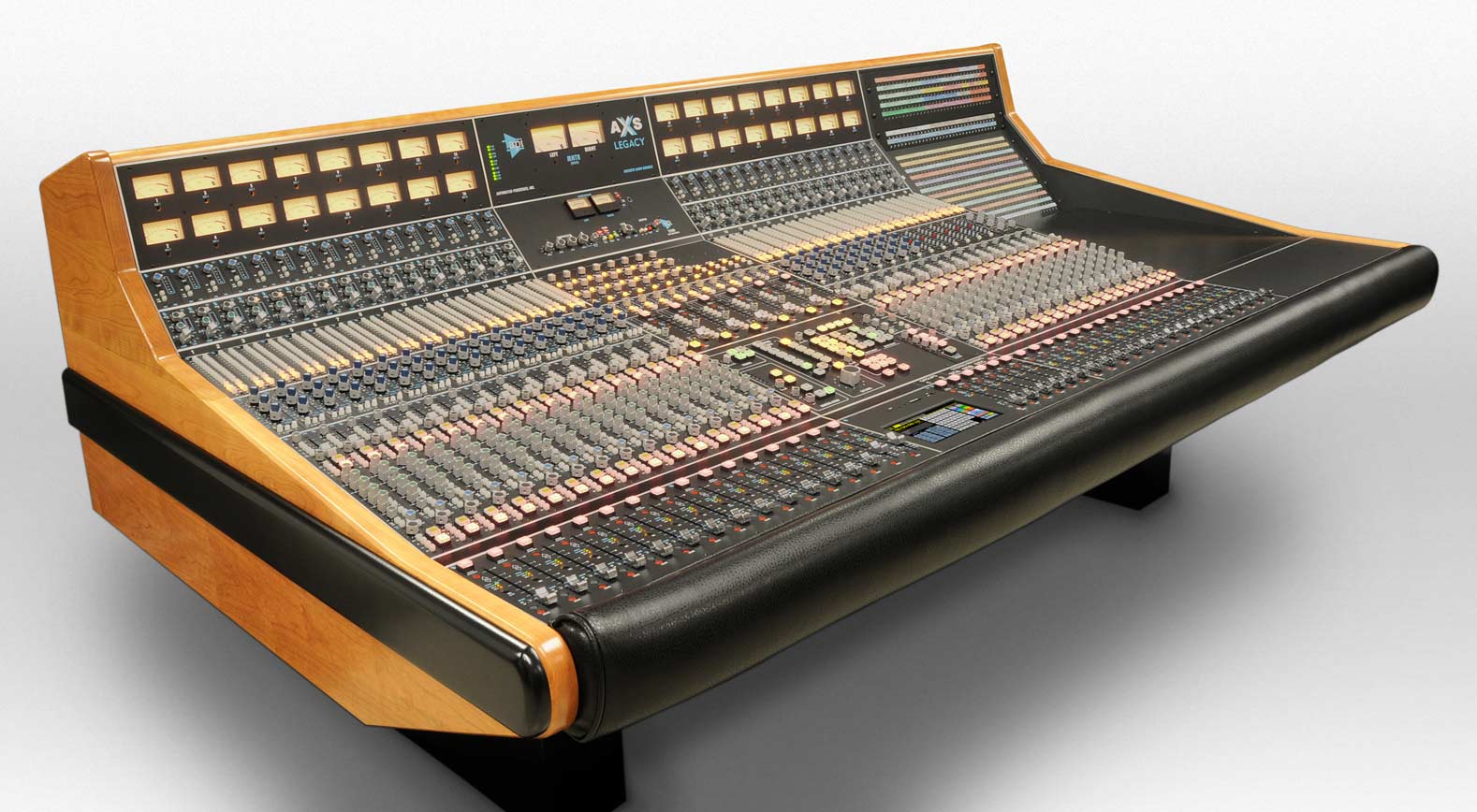
API Legacy AXS
The API Legacy was introduced in 1989, and the Legacy Plus followed a little more than a decade later. Then in 2016, API, building on its 40-plus years of analog console expertise, introduced the Legacy AXS, available in 16-channel buckets starting in 32-channel frame sizes (the traditional 1.5-inch module width returns, with 500 Series slots available on a per-channel basis). Each channel offers dual input capability and access to two API 200 Series module slots: mic pre, compressor, noise gate, filter, direct input. It is fitted with 550 A and 560 EQs, and also features 24 main buses, 12 aux sends and three stereo buses; a complete center section, including 5.1 surround monitoring; six stereo echo returns with automated faders, providing extensive routing features for parallel compression and stem mixing; 2500C stereo bus compressor standard; and onboard or remote patchbay.

Avid Pro Tools | S6 EUCON Update
By combining the best of the ICON and System 5 product into the powerful Avid S6, officially called Avid Pro Tools | S6, Avid has in place a EUCON-based technology that ports to all things audio. While the S6 has yet to really penetrate the high-end recording world, it has taken over high-end post-production (especially with the recent Dolby Atmos integration) and made strong inroads into live and touring sound. Avid recently released a EUCON 2018.3 software update that includes a host of new features, including a Unified Workstation Installer; an iPad Pro Tools | Control App (for an extra set of softkeys, transport control, or remote recording and monitor cue mixing); and Multiple-DAW Softkey Macros, for those with lots of PT systems, or lots of regular visitors.
Fantasy Studios Installs Avid Pro Tools | S6 in Its Mix Theater, by Matt Gallagher, July 26, 2016
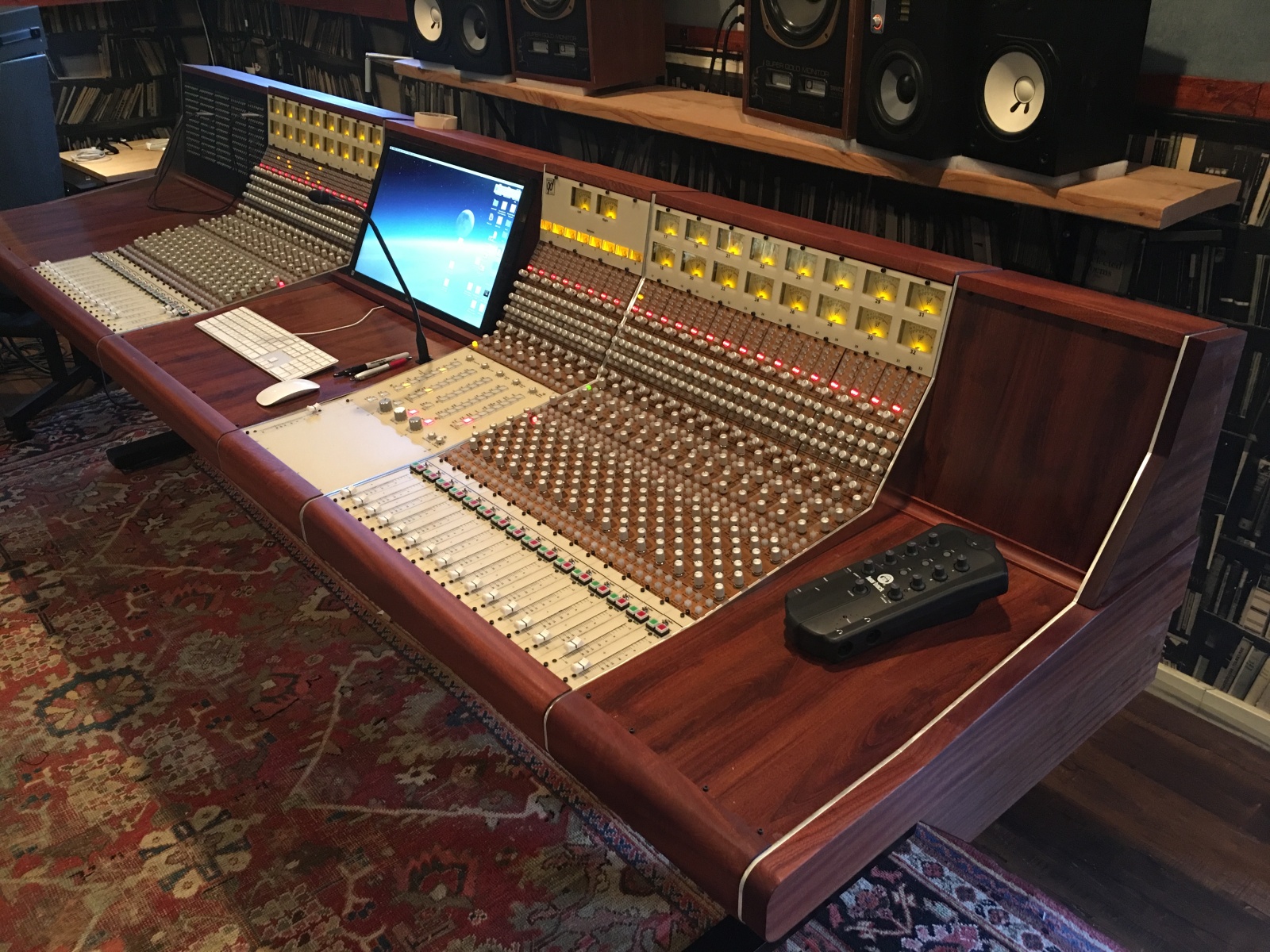
Daking Recording Console Mark II
The Daking Console, now available as the Mark II, works well with DAWs, switching from legacy busing to DAW Direct routing with a button-push. Still, it’s the Class A circuitry, transformer-coupled preamps and discrete transistor design that attracts studiophiles. Available in 16-channel increments, the input channels all offer built-in compressor/limiters, high and lowpass filters and a 4-band inductor style EQ. The EQ features high and low shelving Baxandall filters as well as two mid-band peak filters. Mic inputs are Jensen transformer-balanced with 75 dB gain, a 20 dB pad, 48V phantom power and phase reverse. Line inputs are transformer-balanced and differential. The compressor/limiter features fast and slow attack, fast and auto release (ratios 4:1 and 16:1). The 4-band EQ (±17 dB, lowpass filter 6 dB per octave) includes high and low shelving, high and low-mid peaking, with inductors and proportional Q, and boost/cut.
NYC’s Tisch School Opts for Daking Analog Console, April 14, 2005
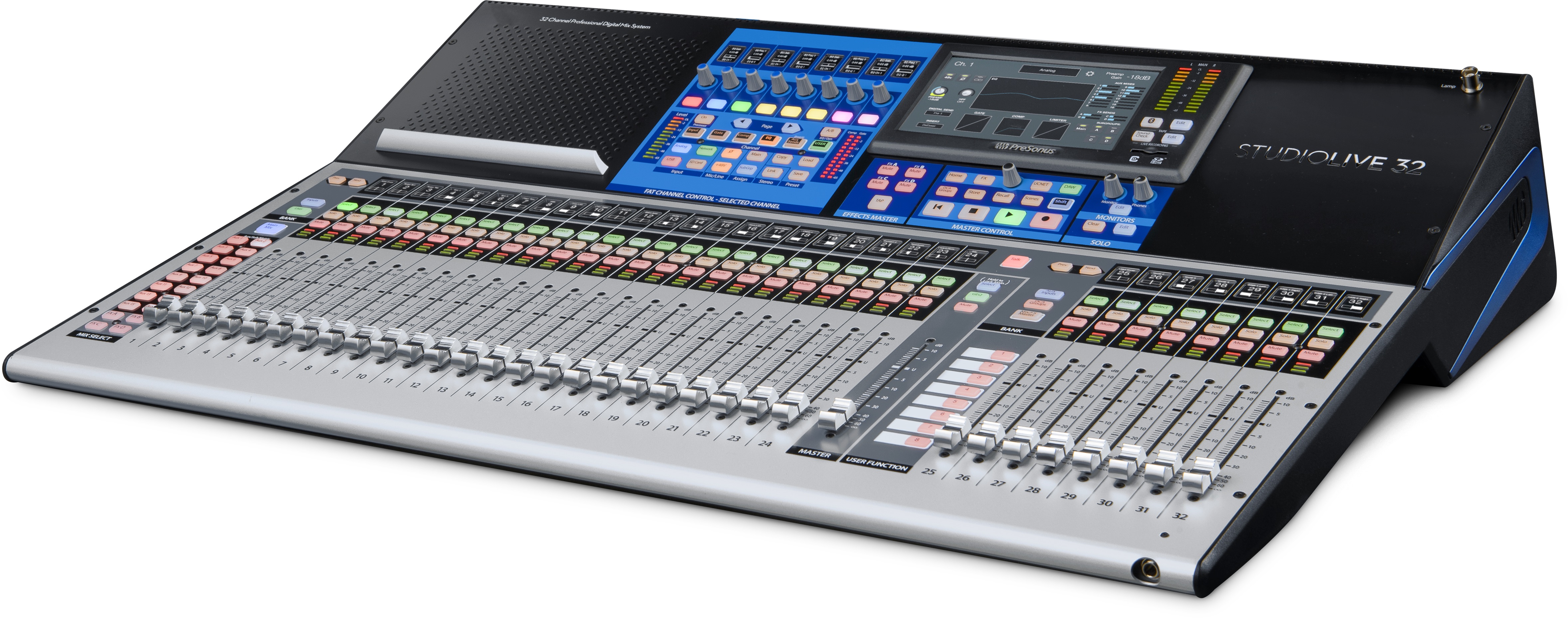
PreSonus StudioLive III
The StudioLive Series from PreSonus is relatively unique in the console/controller world for the way that it navigates between the two, and equally well been stage and studio. Available in 16, 24 and now 32-channel frames, StudioLive 32 features 33 touch-sensitive, motorized faders, a large 7-inch color touchscreen and, perhaps most importantly, 32 channels of XMAX preamps in the 32 rear-panel XLR jacks, half of which include a 1/4-inch balanced line-level option via combo jacks. (StudioLive III can also function as a 38×38 USB audio interface or 55×55 AVB Ethernet interface.) The headphone jack, AES/EBU output, 16 line-level “mix” outputs and other “tape outs” can pass signal from a number of customizable buses. The console’s 16 mono “Flex Mix” buses can be used for a choice of monitor mixes, effects sends, processing subgroups or matrix mixes. A built-in multitrack recorder can write to the SD card or out via USB 2.0. Series III also improves the already impressive DAW integration (especially when using the included Studio One software) with the addition of DAW Control. A lot more comes with each PreSonus console, including AVB capability, plug-ins and Fat Channel processing. A unique console that continues to evolve.
PreSonus StudioLive 24.4.2AI Mixing Console: New Features, Solid Sonics and Wireless RC, by Steve La Cerra, Aug. 1, 2014
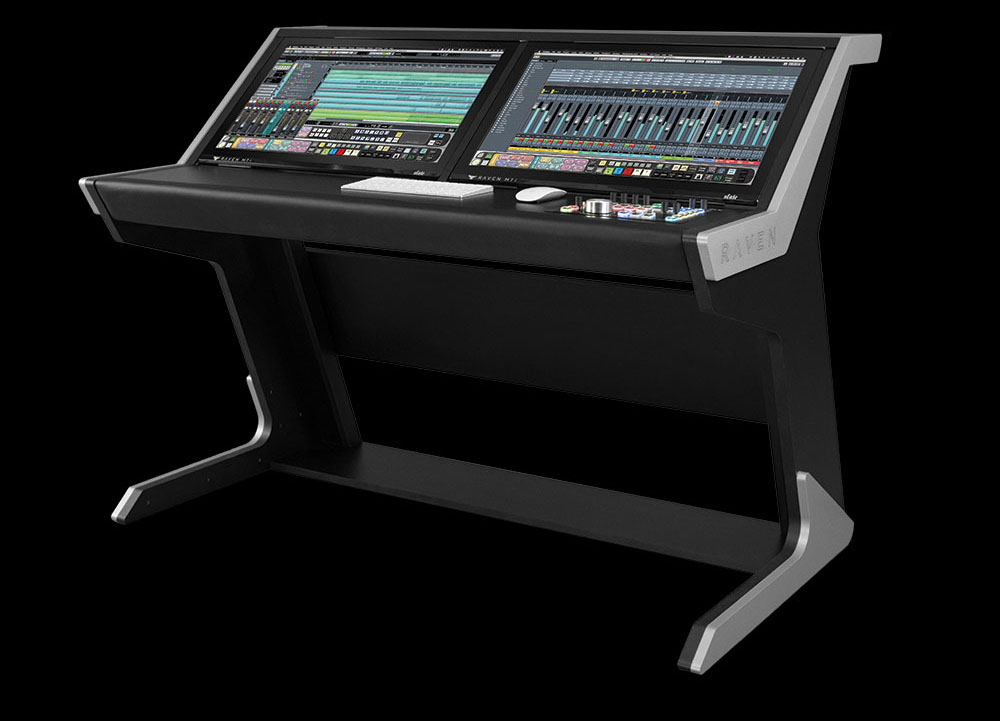
Slate Raven Core Station
We know, the Raven is a controller, not a “console,” as some engineers like to remind us. But it is sure a full-blown studio system, and with the Core Station full studio production “ecosystem,” as the company calls it, you do get, besides the incredible touchscreen control capabilities, a Paul Wolff-designed analog monitoring system called Slate Control. The Core Station is essentially a packaging of the popular MTi2 in a variety of single-screen or two-screen configurations. Each includes: Faders 3.0, an algorithm that gives the faders a virtual “feel,” with Fine Fader mode quadrupling the resolution of the faders; Gestures, allowing classic multitouch gestures to control important elements of the DAW such as opening and closing plug-ins, muting and unmuting tracks, zooming in and out, etc.; 3.5 software for customized multitouch control of Ableton Live, Cubase/Nuendo, Digital Performer, Logic Pro X, Pro Tools 10-12, and Studio One v3 on Mac, as well as Windows compatibility for Pro Tools 10-12, Cubase 8 and 9, and Nuendo 7. Slate Control features seven stereo inputs, three speaker sources with LFE Enable per speaker pair, two stereo cue outputs to feed headphone amps, talkback, CAL mode to preset a reference monitoring level, LFE output with LPF and crossover point, phase and level, DB25 I/O, DB9 connections for VU aux and talkback aux, and two powered USB 2.0 inputs.
Digital Audio Workstation Choices—What’s Out There in 2016, by Strother Bullins, Nov. 16, 2016
The Modern Work Surface, Where Touch and Traditional Control Collide, by Strother Bullins, Aug. 1, 2016
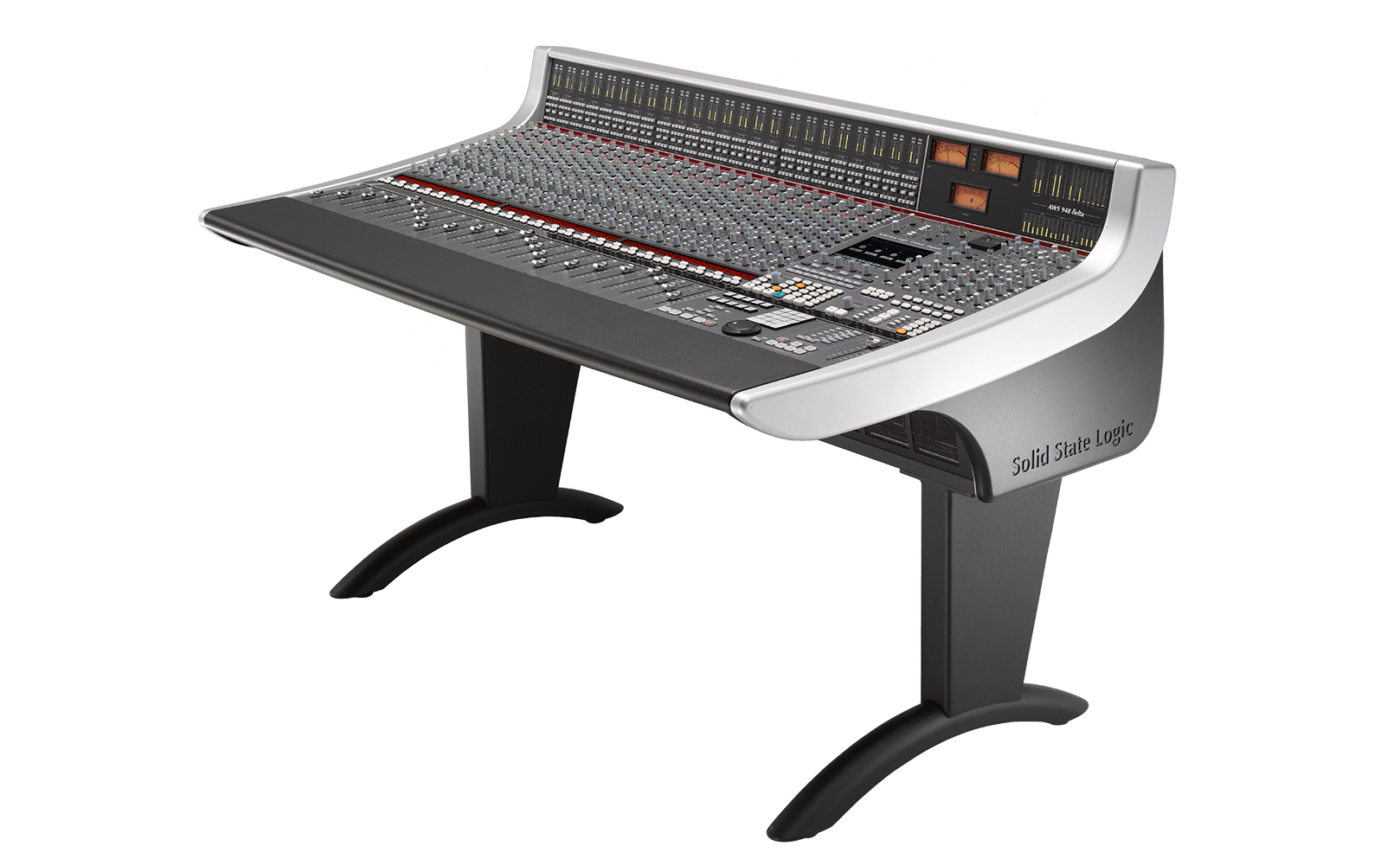
Solid State Logic AWS Series
The AWS has been one of the most successful SSL consoles of all time, and that is saying a lot. It’s a hybrid design that combines the best of DAW workflow and SSL SuperAnalogue console technology. In 2015, SSL added the innovative δelta-Control system to enable the seamless use of standard DAW automation for control of the console analog signal path. And in late 2016, the company debuted a trio of new features also aimed squarely at incorporating analog processing into DAW-based workflow. The first addition is Stereo Channel Output rear panel connections. These enable Stereo channel mode stem recording in a single pass and in place, post pan, stereo stem generation in In-Line channel mode. The second is independent insert in/out switching on inline channels via a new softkey in the small screen Chan Setup page. Finally, the graphics for the small screen signal flow GUI have been enhanced so that the Chan Setup page dynamically displays processing order and in/out status on Stereo and In-Line channels.
The Anexe Studios in Exeter Relies on SSL AWS 948 Console, by Matt Gallagher, Aug. 9, 2016
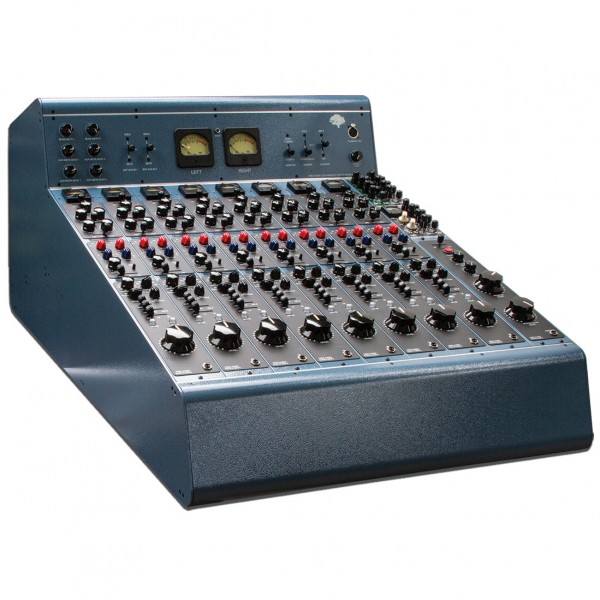
Tree Audio The Roots Generation II
The Roots Generation II recording console from Tree Audio, a boutique manufacturer that makes old-school (yet modern-sounding), high-quality, handmade products here in the United States, is an 8-channel tube/hybrid console (available in 16-channel version with user-configurable options) that features all tube and transformer mic pre, line input, DI, EQ and limiter; four aux sends; balanced inserts on all channels and stereo bus, EQ and limiter on each channel; a full-featured master section; four 500 Series slots; and a vacuum tube and linear regulated power supply.
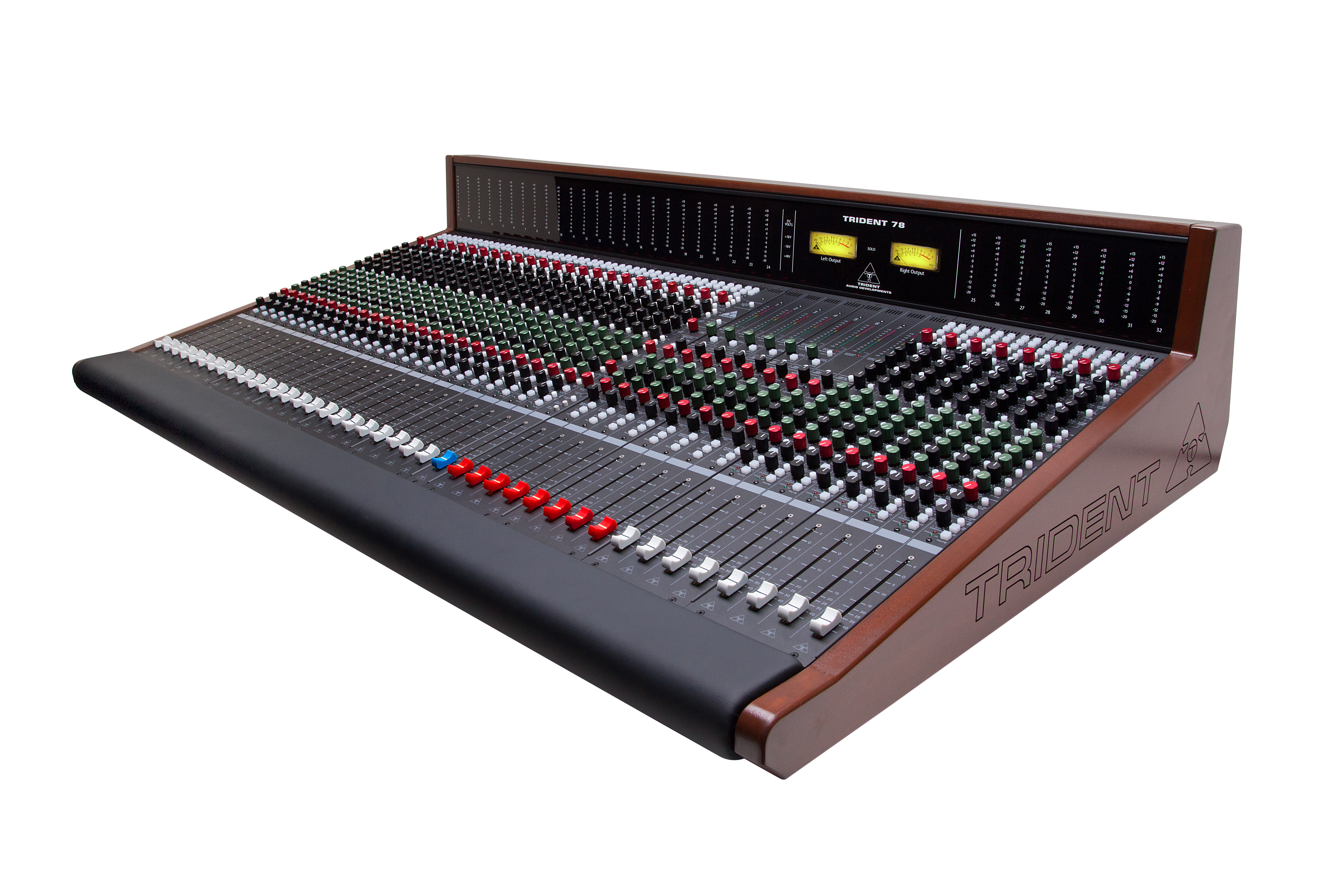
Trident Audio 78
Based on the success and the underlying technology of the Trident 88 release a few years back, the company came out in 2016 with a slimmed down, more cost-effective version in the Trident 78—while retaining that classic Trident sound. The 78 is a split/inline design with individual channels in four-way panels. Using an eight-subgroup configuration and incorporating six aux sends, its routing options are vast. Connections are DB-25s throughout and XLR for speaker and main outputs. It uses the same high-quality Class A Discrete preamp as the 88 (60 dB gain, balanced inputs and balanced inserts with full bypass). The EQ is from the iconic Trident 80 Series and features selectable high bands at 8k and 12k, sweepable high and low-mids, and selectable low bands at 60 Hz and 120 Hz, with 50 Hz highpass filter and selectable channel insert. The Master Section includes eight subgroups, subgroup monitor returns, two mono and one stereo aux, subgroup stereo FX returns, 1/8-inch TRS, talkback, and selectable output transformer option.
Trident Series 88 Console—First Look, by Barry Rudolph, April 1, 2015
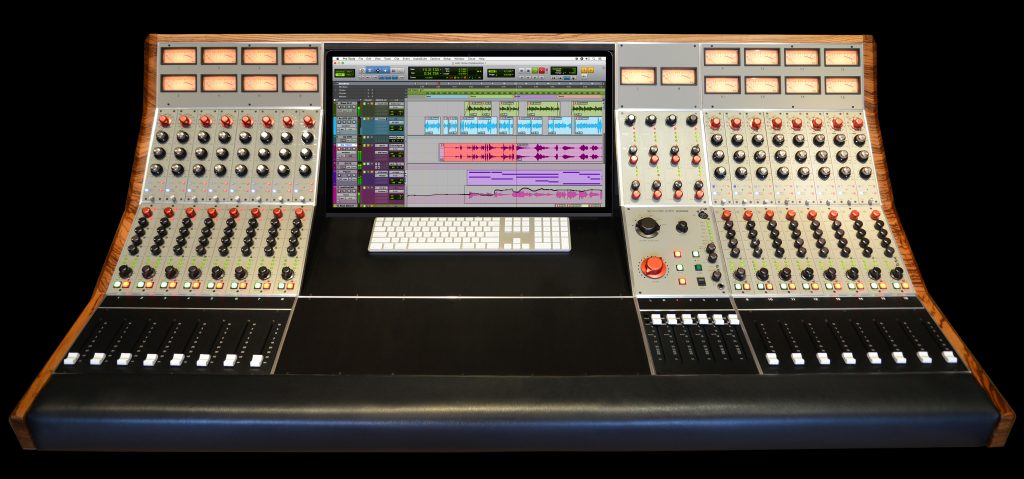
Wunder Audio Wunderbar Super D
Wunder Audio Wunderbar, introduced nearly a decade ago, is truly a one-of-a-kind console. A “Fully Balanced Busing Scheme” is the heart of the Wunderbar (dubbed the Wunderbahn), utilizing the PEQ2 channel amplifier. There are transformer-balanced direct outputs and inserts on all channels. The stereo bus has three stereo amplifier choices: Wunder, 1272 and 312. The 1046 routing modules are fully transformer balanced Class-A Discrete. Each channel has a monitor fader that is flippable with the main channel fader. Also featured are six buses with illuminated switches, four auxes switchable pre or post, Pan Defeat, 48V phantom, and “Opto Silent” mute. Now Wunder has introduced Wunderbar Super D, an 8-channel D-Sub25 version of the original to attract DAW users. Super D includes new iMac 27-inch display section, expanded I/O, DAW D-Sub inputs plus mult for analog, balanced aux masters, Track/Mix Flip and Insert Defeat capability, and isolated DC voltage paths and audio paths.
Small Format Studio Consoles, by Michael Cooper, Aug. 1, 2012
Want more stories like this? Subscribe to our newsletter and get it delivered right to your inbox.
